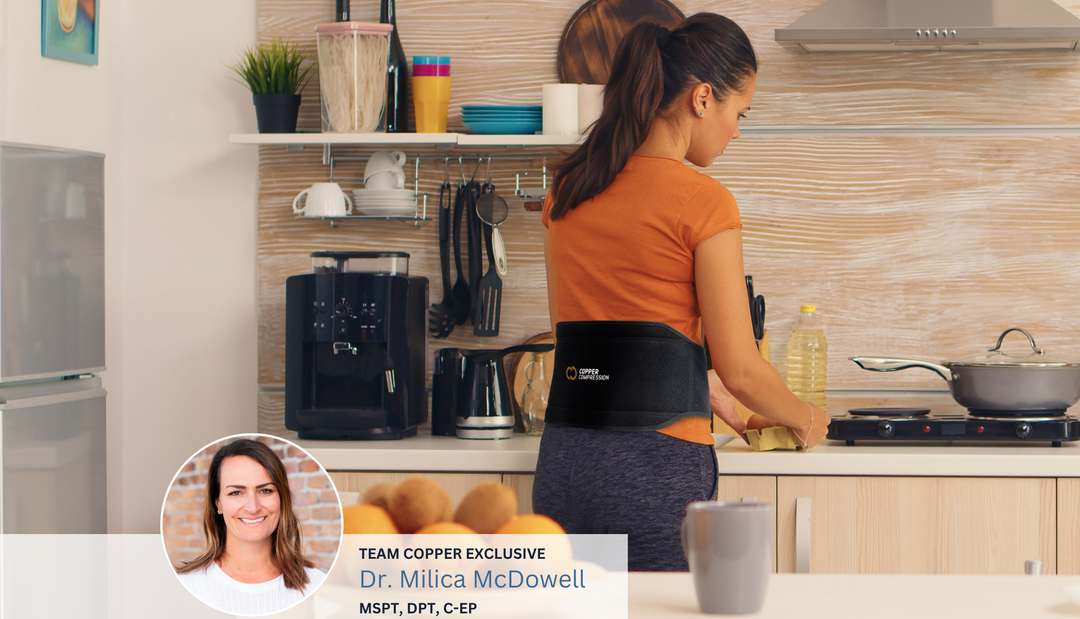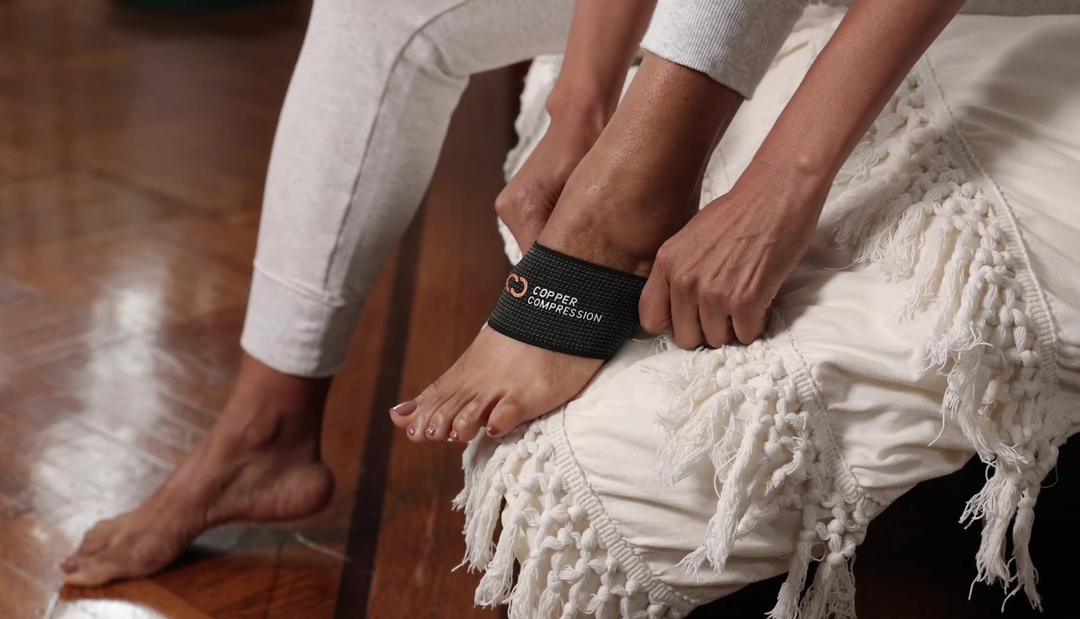R.I.C.E. vs. M.E.A.T.: The Best Approach for Easing Pain and Recovery
Introduction
Pain and injuries are unwelcome visitors that can disrupt our daily lives. Whether it's a sprain, strain, or another soft tissue injury, finding the right treatment approach is crucial for a speedy recovery. In this blog post, we'll dive into two popular methods – the R.I.C.E. method and the M.E.A.T. method – and compare and contrast their effectiveness in easing pain and promoting healing. By the end of this read, you'll be equipped with the knowledge to make informed decisions about your own recovery journey.
History
In 1978, the R.I.C.E. protocol (Rest, Ice, Compression, Elevation) emerged as a widely recognized method for addressing soft tissue or ligament sprains (Mirkin, 20141). As an alternative approach, M.E.A.T. (Movement, Exercise, Analgesics, Treatment) also gained prominence in injury treatment strategies.
Although no comprehensive research directly compares these two treatments, it's evident that they lead to distinct physiological responses. The accompanying table demonstrates that R.I.C.E. can delay recovery by diminishing factors like blood flow, immune response, range of motion, and overall healing. In contrast, M.E.A.T. amplifies these responses, resulting in expedited healing times.
However, before dismissing the R.I.C.E. regimen outright, consider its potential benefits for muscle injuries. Particularly, in cases of muscle injury, R.I.C.E. may prove advantageous in preventing compartment syndrome—an elevation in pressure within the fascial sheath due to excessive swelling (Hauser, 20142).
Foot This condition could compromise oxygen delivery and skew pH levels, leading to long-term tissue damage (Hauser, 2014).
Conversely, when dealing with ligamentous injuries, the M.E.A.T. approach is suggested as more suitable. Dr. Ross Hauser from Care Medical Rehabilitation Services Inc. found that even a 10-degree Celsius temperature change results in over a two-fold increase in cell metabolism. This insight emphasizes that elevating tissue temperature by 10 degrees can more than double the cell metabolic rate. Given this perspective, the M.E.A.T. regimen, which bolsters blood flow, collagen formation, and comprehensive healing, emerges as a preferable strategy for ligament injuries.
The R.I.C.E. Method: A Classic Approach
The R.I.C.E. method, which stands for Rest, Ice, Compression, and Elevation, has been a staple in first aid and injury management for decades. It is often utilized to address acute injuries, such as sprains and strains. However, its principles can also be adapted for chronic pain management. Let's break down each step and understand its role in the recovery process:
- Rest: Allowing the injured area to rest helps prevent further strain and supports the body's natural healing process.
- Ice: Applying cold to the injury site reduces pain and swelling by constricting blood vessels. This age-old technique reduces inflammation and numbs the area, offering immediate pain relief.
- Compression: Wrapping the affected area with a compression bandage controls swelling and provides support, which can be crucial in preventing additional damage. Wearing supportive garments like compression sleeves or gloves can aid in reducing discomfort associated with conditions like arthritis.
- Elevation: Raising the injury above heart level encourages fluid drainage, further minimizing swelling and enhancing the healing process.
Pros of R.I.C.E.
- Simple and easy to remember, readily accessible
- Effective for acute injuries.
- Provides immediate relief from pain and swelling.
Cons of R.I.C.E.
- May not be as effective for chronic pain.
- Focused on symptom management rather than addressing underlying issues.
The M.E.A.T. Method: A Modern Perspective
The M.E.A.T. method, which stands for Movement, Exercise, Analgesics, and Treatment, is gaining popularity as an alternative to the R.I.C.E. method, especially for chronic pain management. This approach takes a more proactive stance and is designed to improve overall functionality while addressing the pain:
- Movement: Gentle, controlled movement is encouraged to prevent stiffness and maintain flexibility in the affected area. This approach promotes blood flow and prevents muscle atrophy.
- Exercise: Targeted exercises help strengthen muscles around the injured area, providing better support and stability. Physical therapy programs often incorporate exercise as a core component of the M.E.A.T. method.
- Analgesics: Pain-relieving medications can be used as needed to manage discomfort, allowing individuals to engage more effectively in movement and exercise.
- Treatment: Professional treatments such as physical therapy, chiropractic care, and acupuncture can be integrated into the M.E.A.T. method to address the root causes of chronic pain.
Pros of M.E.A.T.
- Holistic approach addressing underlying issues.
- Promotes long-term pain management and functionality.
- Effective for chronic pain conditions.
Cons of M.E.A.T.
- Requires professional guidance for optimal results.
- May not provide immediate relief for acute injuries.
Comparing and Contrasting: Which Method Wins?


Injury Type Matters:
-
R.I.C.E.: Ideal for acute injuries immediately after they occur, such as sprains and strains.
-
M.E.A.T.: Suited for injuries in the later stages of healing or those that require more active management, like chronic pain or tendonitis.
Approach to Rest:
- R.I.C.E.: Emphasizes rest and immobilization.
- M.E.A.T.: Advocates controlled movement and exercises to maintain flexibility and prevent muscle weakening.
Pain Management:
- R.I.C.E.: Uses ice and elevation to alleviate pain.
- M.E.A.T.: Incorporates analgesics and tailored professional treatments for pain relief.
Recovery Speed
- R.I.C.E.: Immediate relief but may prolong recovery due to immobilization.
- M.E.A.T.: Potentially faster recovery by maintaining muscle strength and joint flexibility.
Conclusion
Both the R.I.C.E. and M.E.A.T. methods have their merits and are applicable in different scenarios. For acute injuries, the R.I.C.E. method's simplicity and effectiveness shine, while the M.E.A.T. method's active approach could be a game-changer for chronic issues. Remember, everyone's body and injury are unique, so consulting a medical professional is essential before making a decision.
In the end, the goal is clear – pain relief and a smooth path to recovery. Whichever method you choose, staying informed and proactive in your healing journey is key to regaining control over your well-being.








